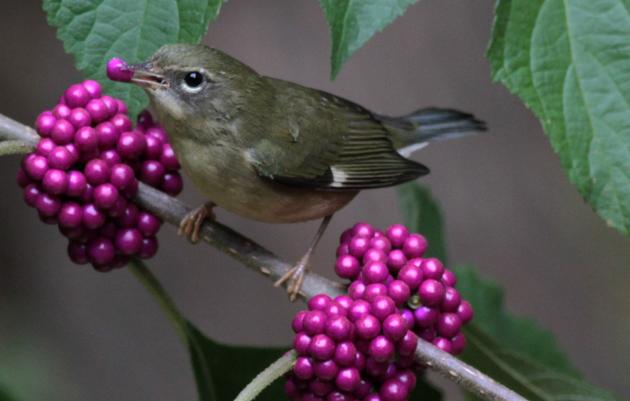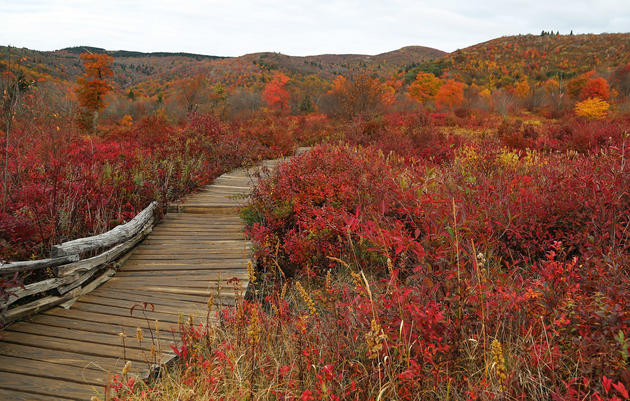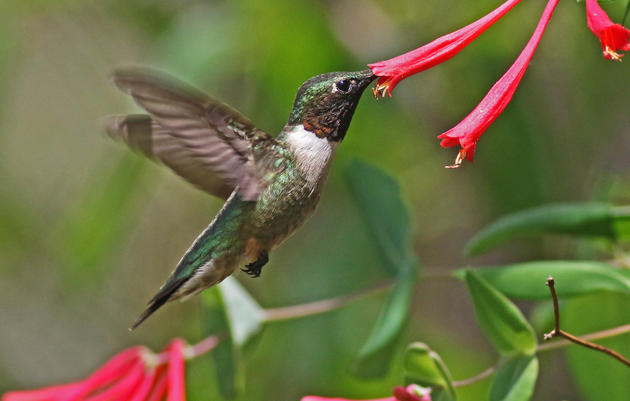Many birds rely on seeds and nuts much of the year, even saving them to eat during the winter months when insects are hard to find.
There are many types of native plant species that supply nuts and seeds—including these four species from our 2018 Bird-Friendly Native Plants of the Year list!
“Native plants are important for your yard because they have evolved here and have adapted to our climate and are resistant to both the heat and cold weather,” said Mark Johns, operations and program supervisor at Hemlock Bluffs Nature Preserve. “Native plants will help you save money in the long run and are ecologically beneficial for around your house.”
Birds love plants that produce nuts and seeds throughout all four seasons, so consider adding these native plants to your backyard!
Find these plants as well as others at your local participating retailer.
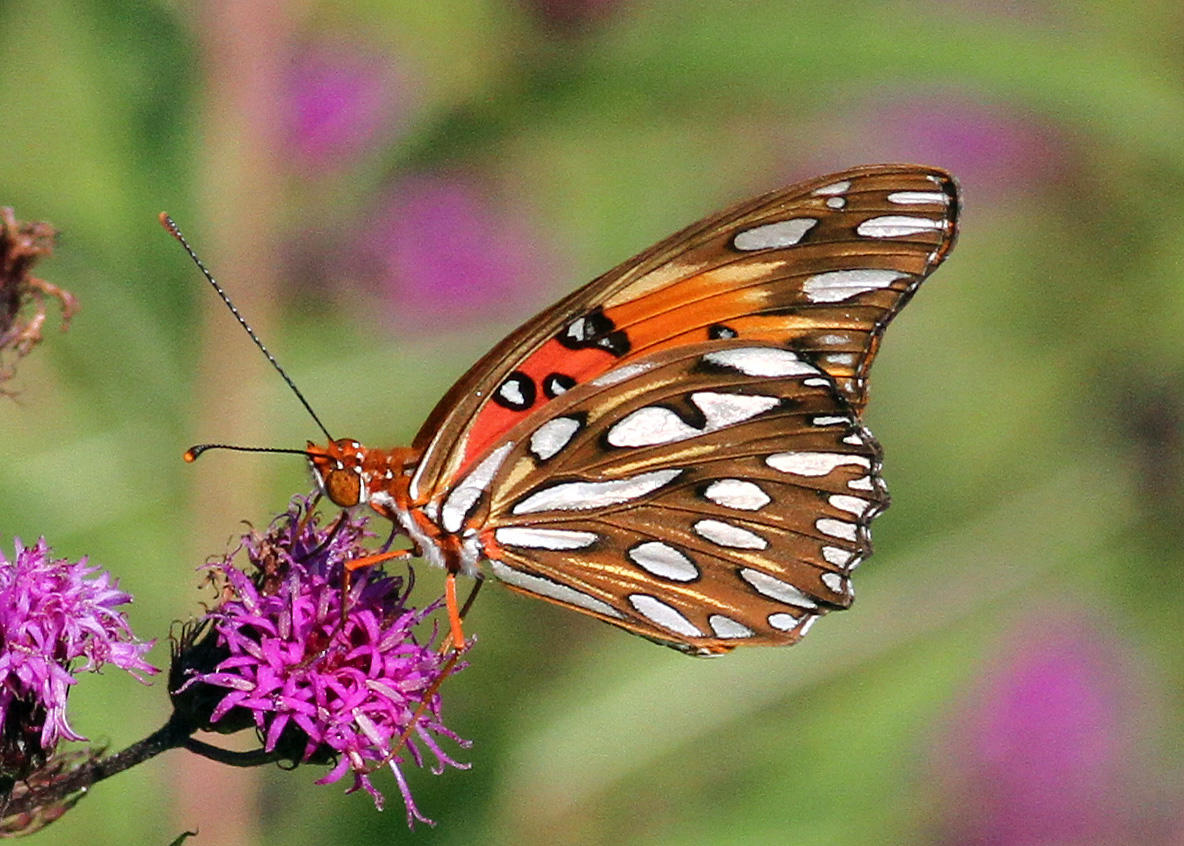
WELCOME THE NEW YORK IRONWEED TO NORTH CAROLINA
New York Ironweed (Vernonia noveboracensis) is a tall, upright perennial normally found in the wild in moist thickets, low areas and along streambanks. They have tall, leafy stems and numerous small, fluffy, purple flowers and can be between 4 and 6 feet tall. They bloom in the late summer into fall, from August through October, just in time for fall migration! The flowers give way to a rusty-colored seed underneath. Sowing the seeds in the fall will help make sure that nutlets mature 3-4 weeks after the blooming period and can give birds the food that they need.
New York Ironweed is great for butterflies and other pollinators and the seeds are popular among many types of birds. This plant is perfect for the back of your border garden or for naturalizing moist areas.
Birds who love this plant include American Goldfinch, House Finch and Song Sparrow.
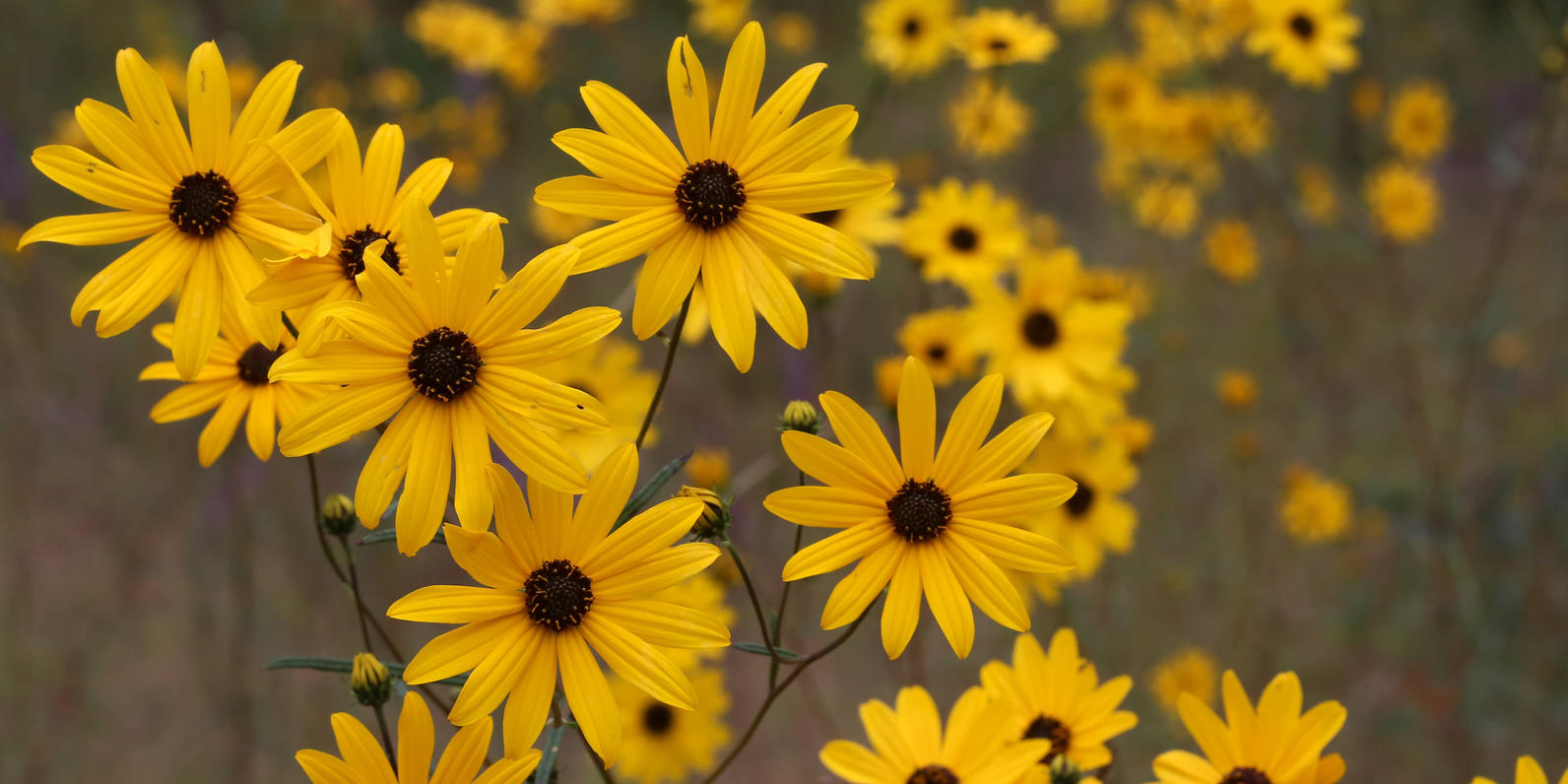
SWAP OUT INVASIVE SPECIES WITH THE SWAMP SUNFLOWER
An accurate name – the Swamp Sunflower (Helianthus angustifolius) will thrive in a wet ditch. Other habitats include floodplains, coastal salt marshes, and wet meadows. This native sunflower grows 5 to 9 feet tall, with bright yellow flowers from August until first frost. It produces golden brown seed clusters from September through November and remain into winter, supporting many types of birds and 73 native caterpillar species! You can plant Swamp Sunflower seeds directly in your garden or propagate it by dividing a mature plant.
Birds who love this plant include Song Sparrow, Eastern Towhee, Blue Grosbeak, Indigo Bunting, Northern Cardinal and Tufted Titmouse.
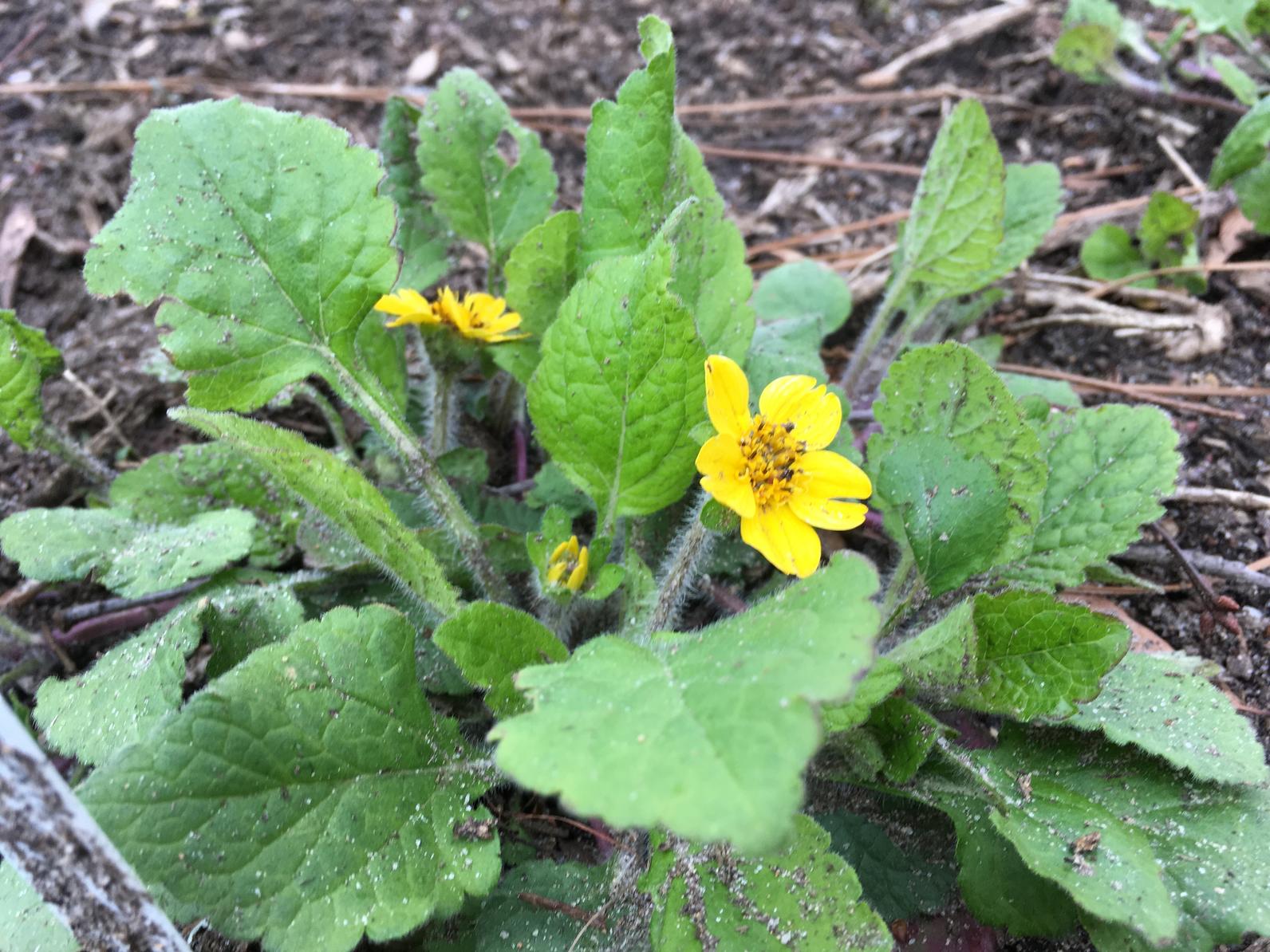
OUT WITH THE OLD, IN WITH GREEN-AND-GOLD
The evergreen Green-and-Gold (Chrysogonum virginianum) will grow bright yellow star-shaped flowers with oval, hairy leaves from March through June, and seeds from April through July. It grows between 6 and 12 inches tall and is a fabulous bird-friendly replacement for English ivy! Green-and-Gold is a deer-resistant groundcover option. It is best propagated by division and this should take place in the fall or late winter. The nutlets mature 2-3 weeks after the yellow flowers fade and drop.
Birds who love this plant include American Goldfinch, Song Sparrow and House Finch.
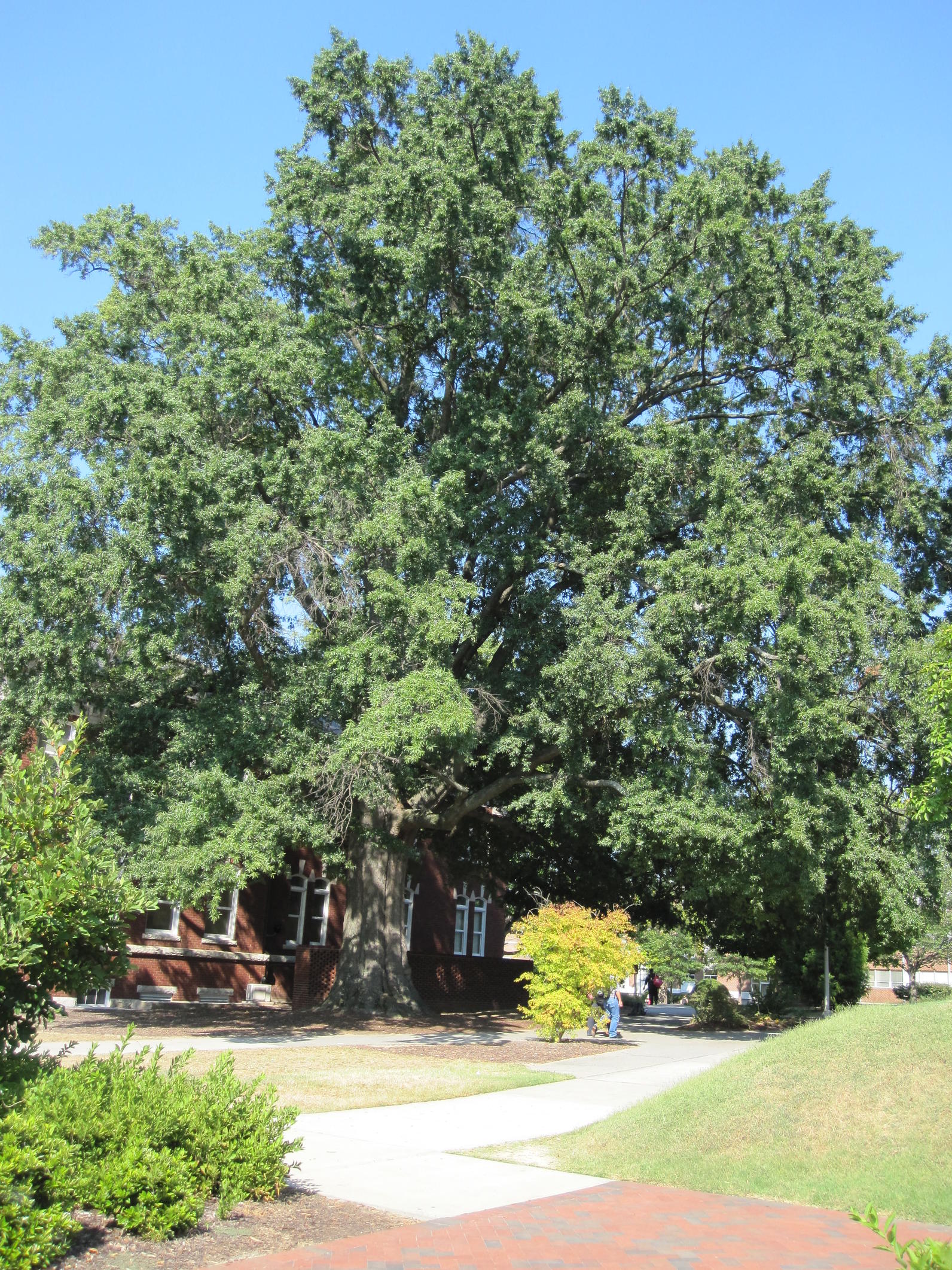
THE WONDROUS WILLOW OAK
Willow is a very popular oak known for its fall golden color and narrow leaves. It will typically be found in moist bottomland soils. Willow oak typically grows 40- 75’ tall with an oval to rounded crown, but can grow up to 100’ in ideal conditions! Leaves change from green to yellow-brown or dust gold in the fall. They provide acorns, an important source of food for many types of wildlife such as squirrels and chipmunks.
Birds who love this plant include woodpeckers, jays and turkeys who depend on its acorns, as well as chickadees who need up to 9,000 caterpillars to raise one nest of chicks according to Dr. Doug Tallamy!
“Another way to help the birds in your garden is by leaving fallen leaves on the ground,” said Ben Skelton, owner of Skelton’s Landscaping Service and New Hope Audubon Society volunteer. “Litter provides ground cover for insects and worms, so removing them takes a lot of good stuff for birds off of your land.”
These are just a few of the plants on our 2018 Bird-Friendly Native Plants of the year list. We’ve also featured nectar and berry-producing plants: learn more about our other 2018 picks here!



